by Taimane Tuiasosopo
This particular Sunday was nice because we had a morning to sleep in. Our day started like any other day, except for the fact that we had a quiz! (*GASP* SOMETHING ACADEMIC?! WHAT?! NO!) However, we were all able to make it through our quiz on
Longitude by Dava Sobel (SIDE NOTE: I recommend this book to everyone! [WARNING: slight obsession with clocks and astronomy are possible side effects.]) After that we hopped on a bus to Greenwich. When we got there we enjoyed the scenery and happily hiked up the miniature mountain to finally set our eyes on the observatory itself.
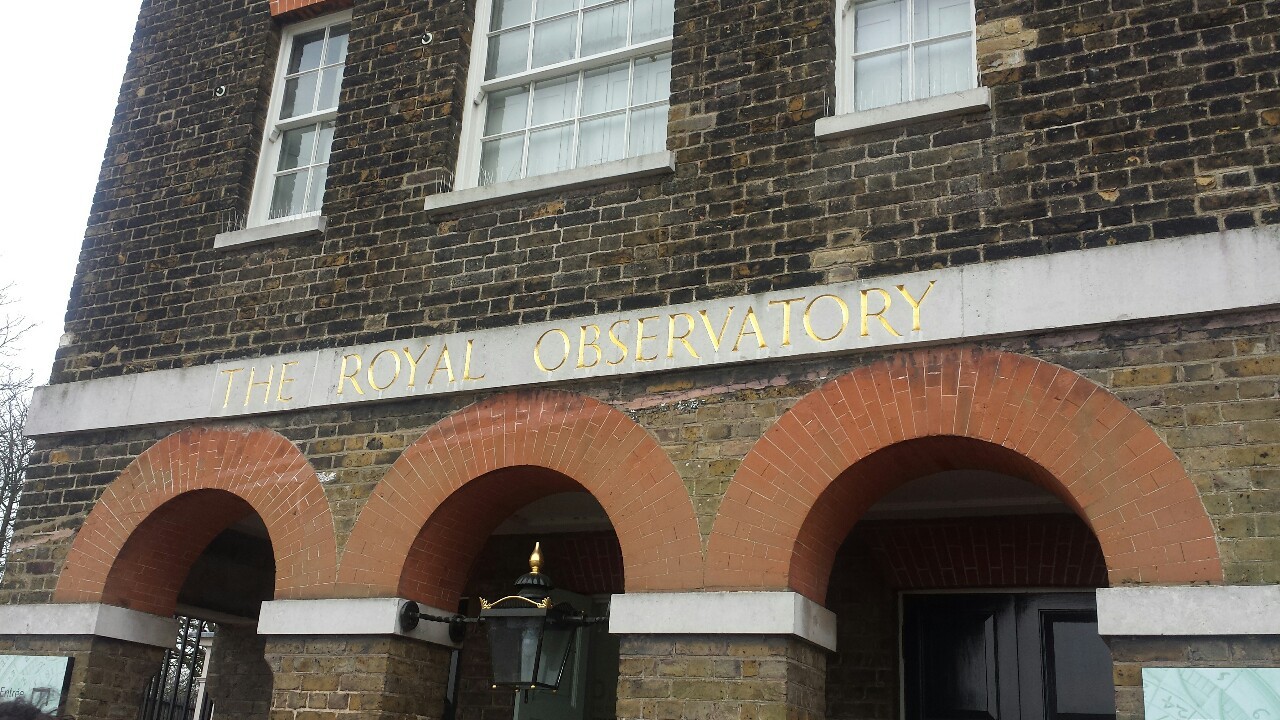 |
| The front of the Royal Observatory Greenwich |
The Royal Observatory Greenwich was founded in 1675 by order of King Charles II. It was originally established so that scientists and other academics could have a place to work on the mystery of finding longitude. Traveling by sea at this time was quite dangerous as sailors had no way to determine their longitude at sea. This requires knowledge of both the time at your current location (solar noon) and also the time back at home (which proved problematic.) Early astronomers studied the sky for years making detailed astronomical measurements of the moon among the stars in hopes of discovering a kind of" celestial clock."
Eventually the problem was solved thanks to a mechanical clock made by carpenter and clockmaker John Harrison (more on him later.) Today the observatory is the site of the Prime Meridian, this means that it sits at 0º longitude. Visitors, like us, come from all over the world to stand on both sides of the Prime Meridian and claim they have stood in 2 hemispheres at once.
FUN FACTS (aka remember these for your next run on Jeopardy):
- The first Astronomer Royal was John Flamsteed.
- The current is Martin Rees.
- The Royal Observatory was designed by Christopher Wren who also designed St. Paul's Cathedral.
- While at his post as Astronomer Royal John Flamsteed (see #1) had some of his astronomical data stolen by Isaac Newton (and published without his consent!)
- Pacific Standard Time (PST) is 8 hours behind Greenwich Mean Time (GMT.)
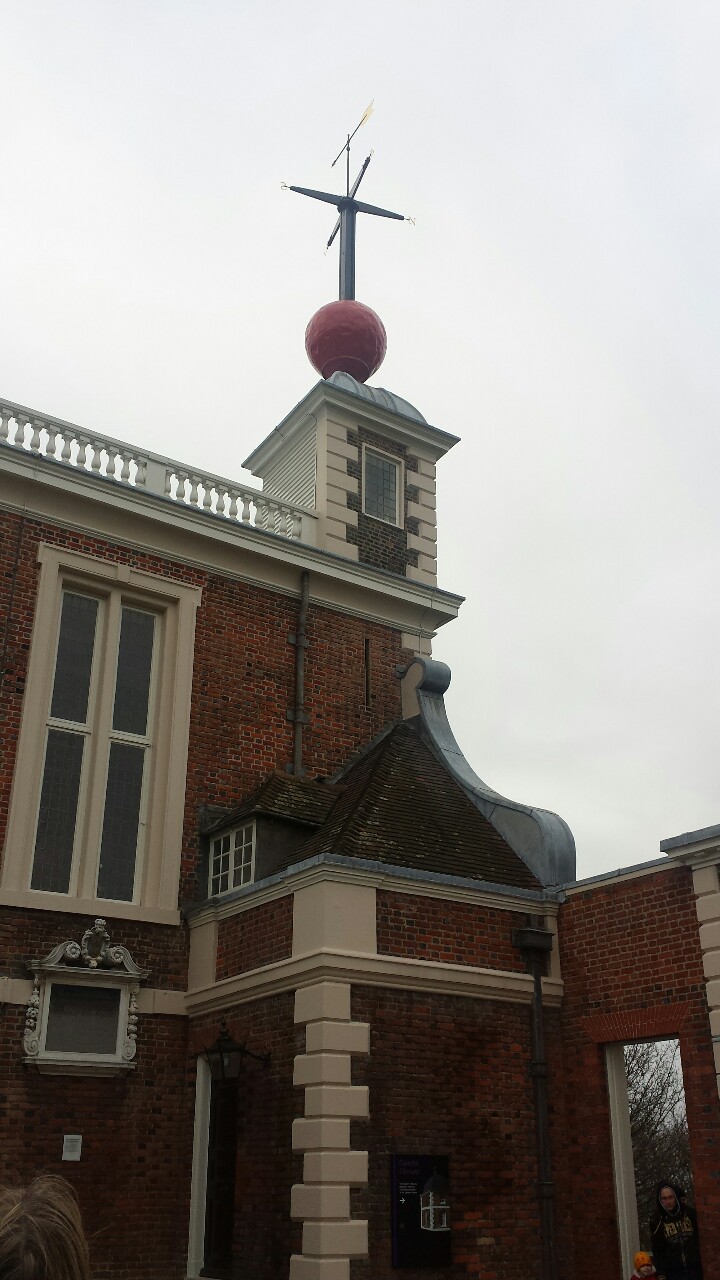 |
| Time ball at the observatory which originally communicated the correct time to sailors on the Thames, and still drops every day at 1pm |
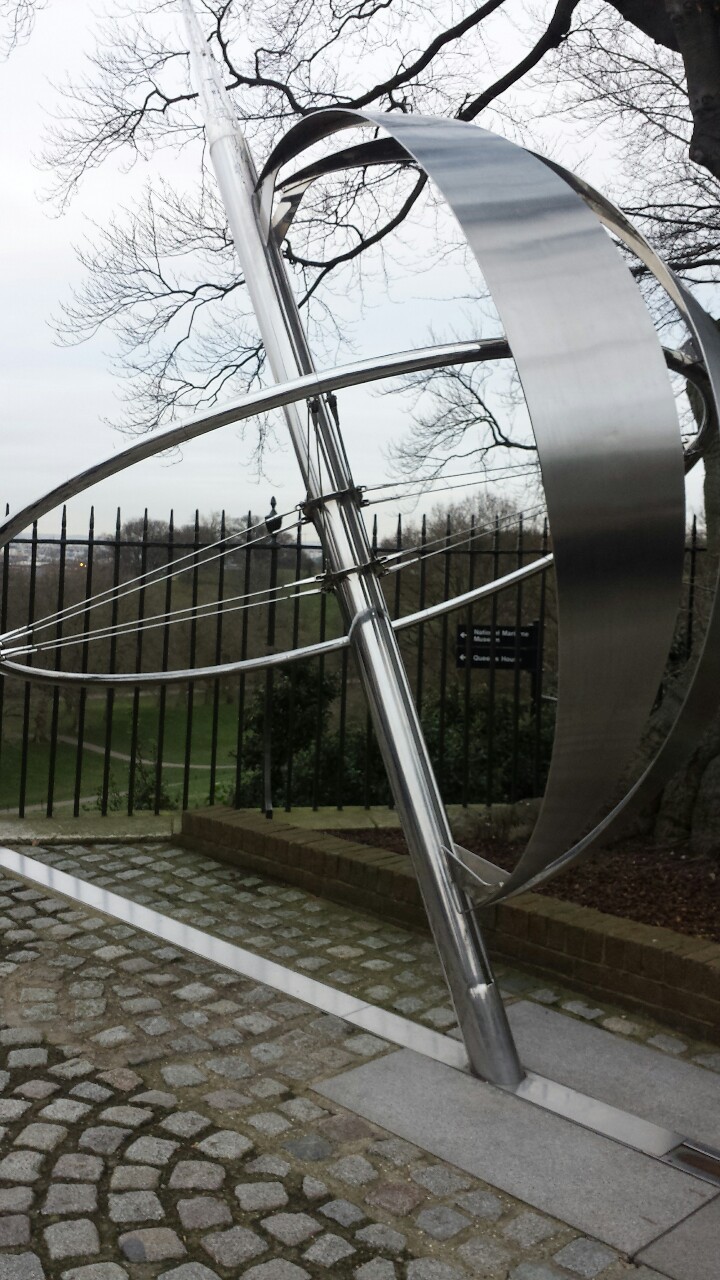 |
| Sculpture with the Prime Meridian running through it at 0º longitude |
The highlight of my visit was seeing John Harrison's clocks. With the help of Professor Lingwood, I found them tucked soundly in a room within a maritime exhibit. As mentioned earlier, our class read
Longitude and learned about Harrison's quest to make the perfect sea clock to aid sailors in their oceanic travels. He toiled for years and years with the aid of grants to come up with a clock worthy of the £20,000 prize (more about the Longitude Act
here.) He made 5 clocks during this time, he called them H-1 through H-5, four of which we got to see in person! His fourth was the one that ultimately tipped the scales on discovering accurate longitude calculations. After reading about all of Harrison's work it was almost unreal to see them in person. Without further ado here are the pictures of them...
 |
| John Harrison's first model titled H-1, weighing in at 75 pounds! |
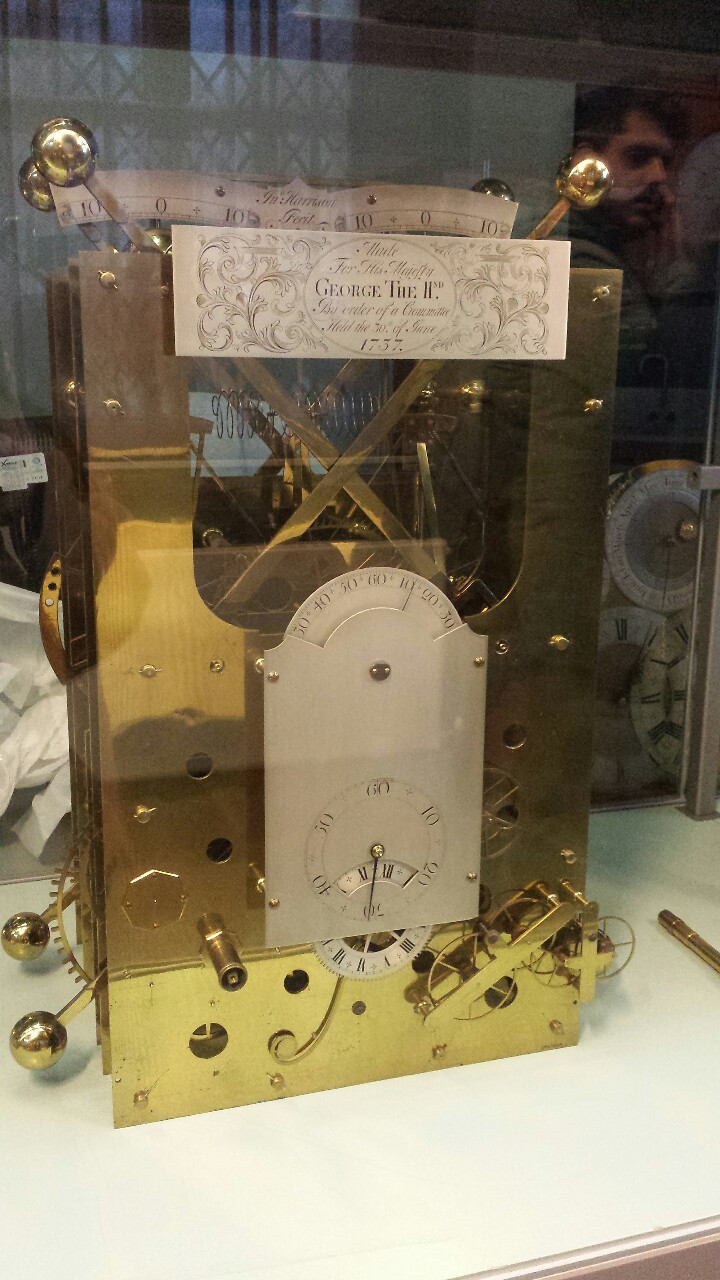 |
| H-2 inscribed "Made for His Majesty George The IInd, By order of a Committee Held on 30th of June 1737." |
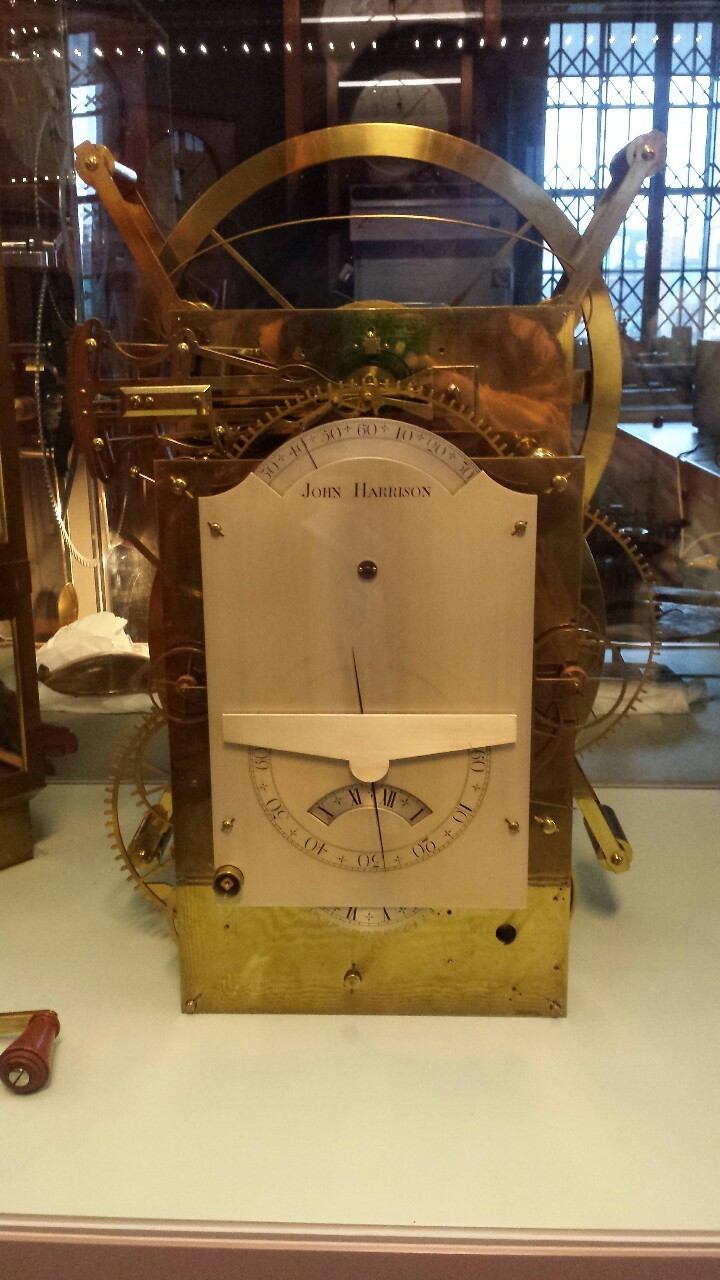 |
| H-3: which Harrison spent almost 2 decades working on. |
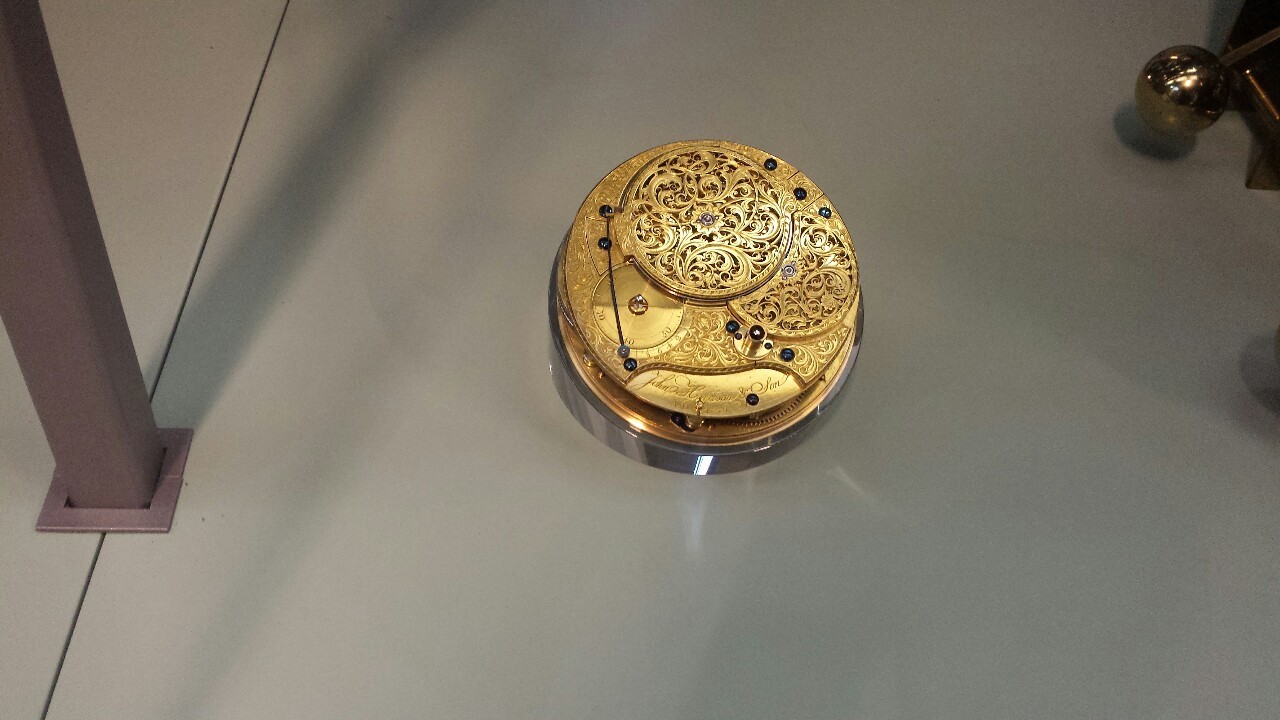 |
| The back of the prized H-4 inscribed "John Harrison & Son AD 1759." |
After the excitement of witnessing the clocks first-hand the class headed to the Planetarium. We concluded our trip by watching a show here entitled "Dark Universe." We learned about dark matter, our universe, and the possibility of discovering farther places in the galaxy as science continues to advance. The show was relaxing and informative. It was the perfect end to an exciting day in Greenwich. I'll leave you all with our view while leaving the observatory.
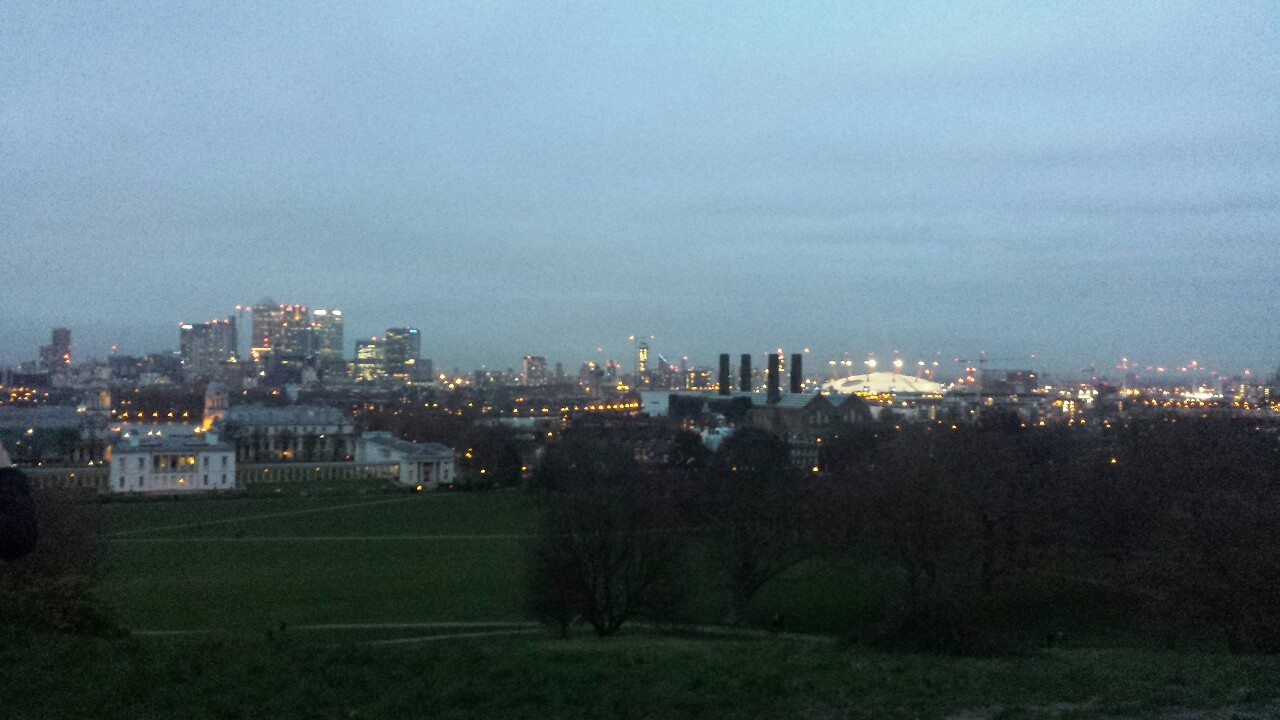 |
| View from the top of the hill at the Royal Observatory. |
Cheers!
Tai :)








No comments:
Post a Comment